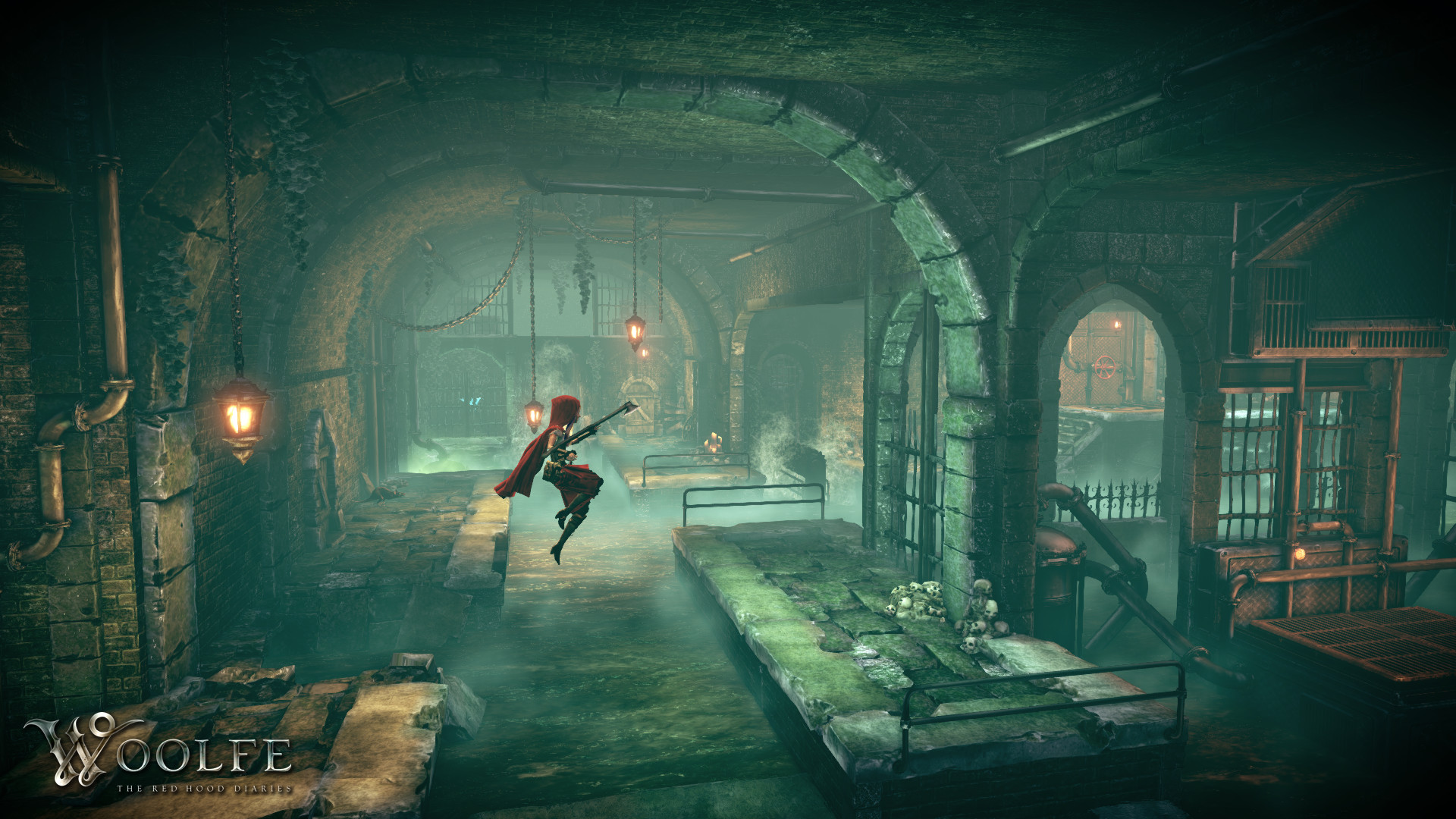Woolfe: The Red Hood Diares
Woolfe: The Red Hood Diaries feels confused. It wants to reimagine the Red Riding Hood fairy tale into a darker, Victorian gothic tale (bearing no small resemblance to the similar idea applied to Alice: Madness Returns) but it doesn’t know how. Ideas bubble around on the surface but always seem to pop before they’ve been explored, and looking deeper only exposes a bigger jumble of incompatible objectives that refuse to settle down as they pull the game in different directions. Pull hard enough, and pretty soon it’s all collapsed at your feet. Take for instance Woolfe’s world. Grime drips off the walls, buildings cast ominous shadows as they attempt to pierce the skyline; rats bite at your feet as you hide from the giant mechanical toy soldiers patrolling the streets, as the city’s drudge trickles into the river. It’s all wonderfully moody and full of character, something Woolfe lacks in every other area but seemed to at least nail in its setting and tone.
But then it hesitates and starts questioning itself. Soon the dim streets of the city are replaced with surreal canyons and floating pathways. No justification is given as to why or how the world has suddenly changed so drastically, it’s simply presented to you as if its inclusion in the game is context enough. It was at this point about halfway through the game that everything began to fall apart around me. The world lost its personality and consistency, and without that to hold onto I began to drift in and out of various states of disappointment, no longer able to deny the problems that had been present from the start.

By forcing me out of the one thing I had started to love, I was left looking at a shell of a game that had taken off its masked and didn’t know where to go from here. The clunky platforming took on new levels of annoyance as I slipped off of ledges or improperly judged a distance as the fixed camera panned away. Combat continued to be dull and flimsy, lacking a sense of impact and killing me at the drop of a hat, as if the numerous bottomless pits and one hit kills throughout the levels weren’t enough.
And finally I was confronted with Red herself. At first, like her city, she felt cold and calculating. Her sense of motivation wasn’t extensively explained, but her determination provided enough of an explanation. She was a simple character, but one that felt inseparable to her game, and her small bits of dialogue helped sell the idea that this was someone with a history and a goal, not just a model of a familiar protagonist.
The more she said though, the harder I was able to buy into the illusion. Her comments began to unsuccessfully break the fourth wall, crack jokes about things that wouldn’t exist in this world, and continue to fail to stick with the game’s attempts to rhyme each line. The oddly written verses are maybe the most distracting thing out of the lot, dropping in and out of rhyme at random, making me question if it was even intentional half the time.
Final Word
Woolfe doesn’t feel like a game that suffers from an undeveloped vision, it’s one that started with a great idea but had no understanding of how to bring it into existence. That makes it an even bigger disappointment though because I feel that it could be great, if only developer Grin had had more time, or a bigger budget, or more experience. There’s a game somewhere in here that I’m dying to experience, and maybe there’s still some hope that it will appear in part two, but as of now it’s all bark and no bite.

